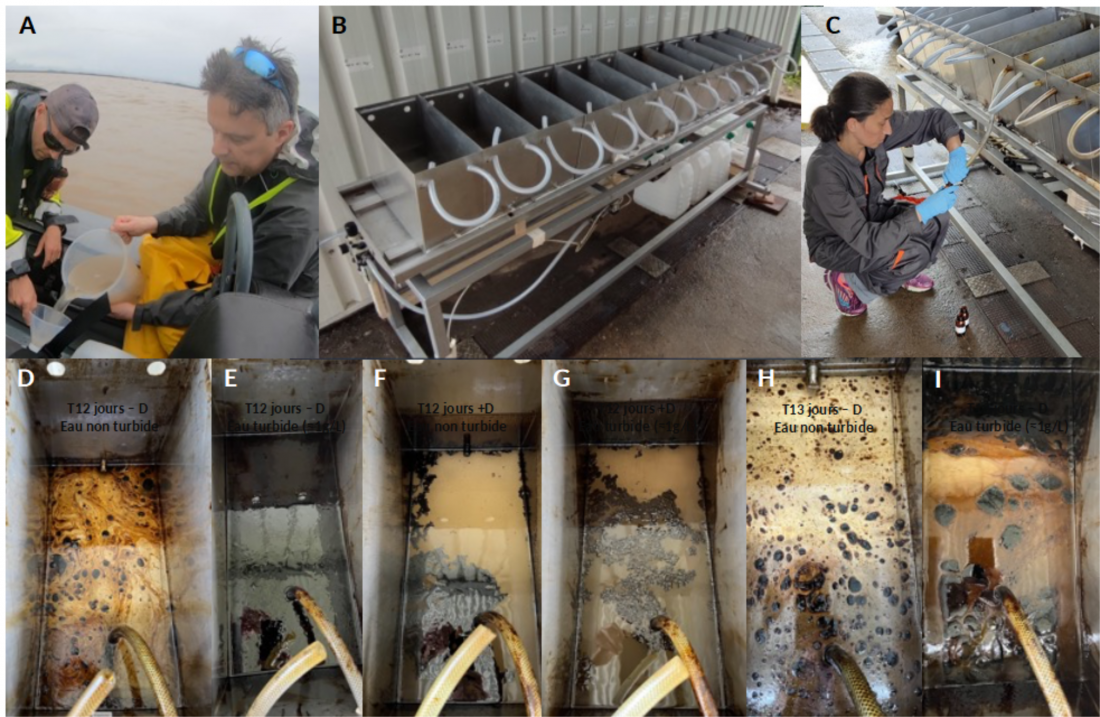As part of their work to improve knowledge of the behaviour of hydrocarbons spilt at sea in tropical regions, Cedre (Centre de documentation, de recherche et d'expérimentations sur les pollutions accidentelles des eaux) and MIO carried out an experiment in French Guiana during February-March at the Cayenne Naval Base (Dégrad des Cannes). The aim of this experimental study was to assess the fate of a crude oil in contact with turbid waters such as can be found off the coast of French Guiana. To carry out this experiment, water samples were taken along a turbidity gradient off the town of Kourou (Fig. 1A) and then poured into several tanks arranged on an oscillating table (Fig. 1B), which enables constant agitation to be maintained. The tanks were contaminated with crude oil, with or without the addition of dispersants. The physicochemical parameters of the water were monitored for 23 days, and samples of water and hydrocarbons (Fig. 1C) were taken to track the degradation of the oil and the dynamics of the microbial communities. The data obtained from this project will provide a better understanding of the behaviour of hydrocarbons (Figs. 1D to I) in this type of environment and, if necessary, enable oil spill response strategies to be adapted in this area, which is characterised by unique hydro-sedimentary dynamics.
Figure 1. A: water sampling off the town of Kourou; B: experimental set-up used; C: water sampling in a tank for hydrocarbon analyses; D to I: examples of the evolution of the oil slick at the surface as a function of water turbidity and the addition (+D) or non-addition (-D) of dispersants. The rapid evolution of the oil at the surface seems to indicate strong biodegradation of the hydrocarbons with a marked effect of turbidity on the behaviour of the oil.





